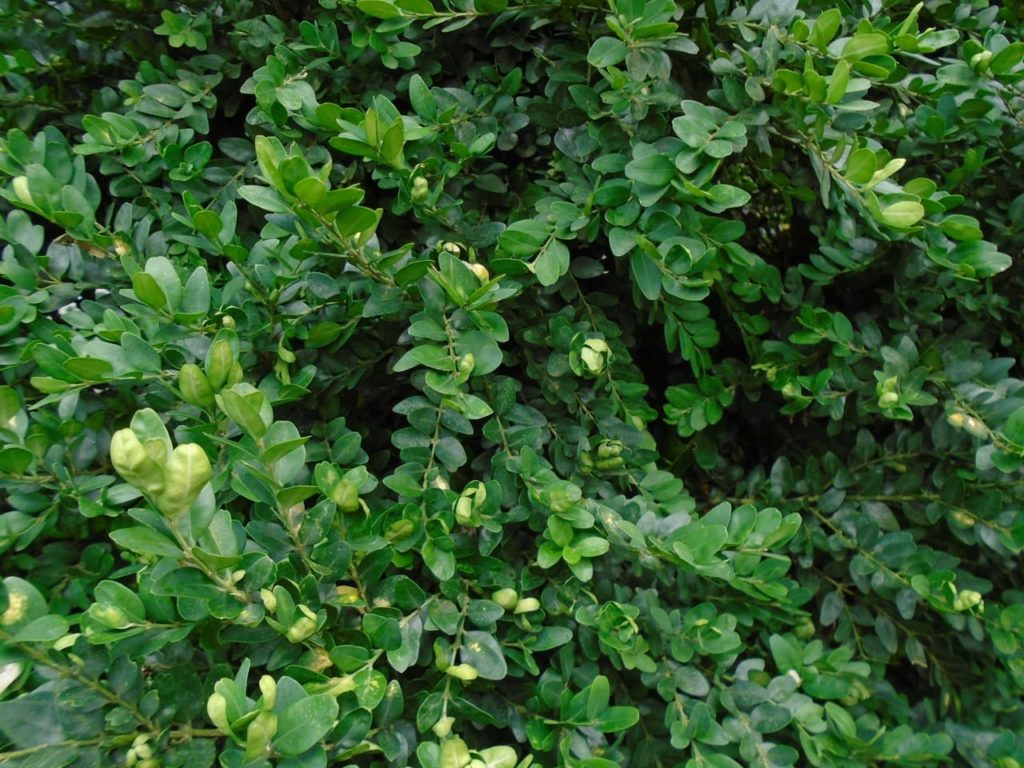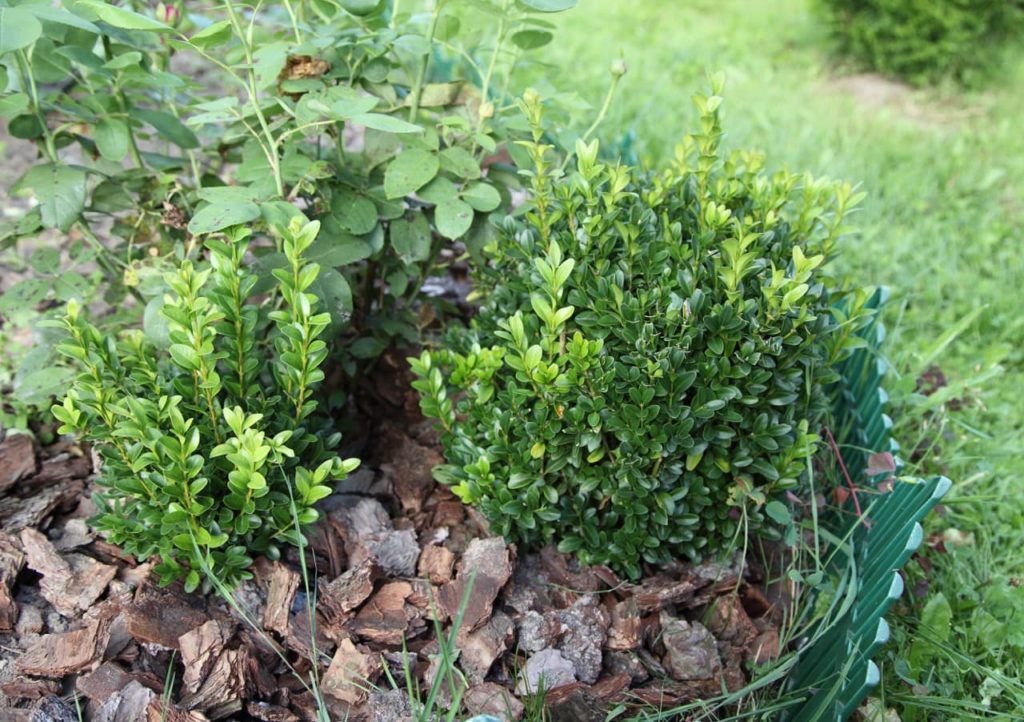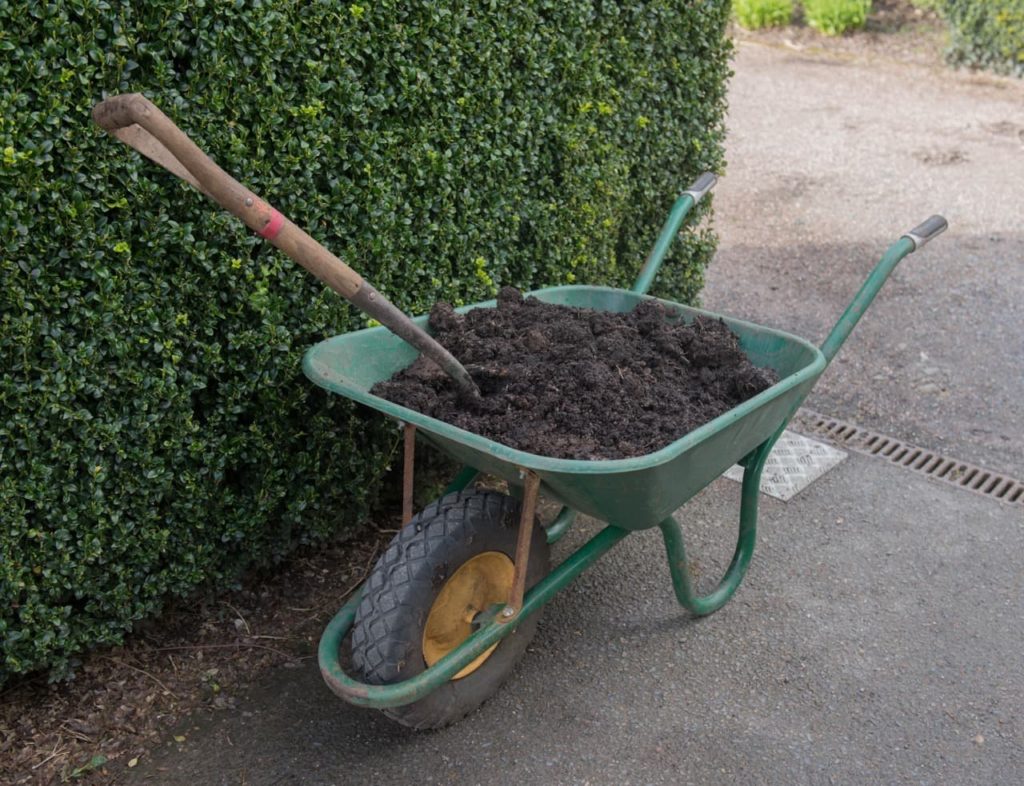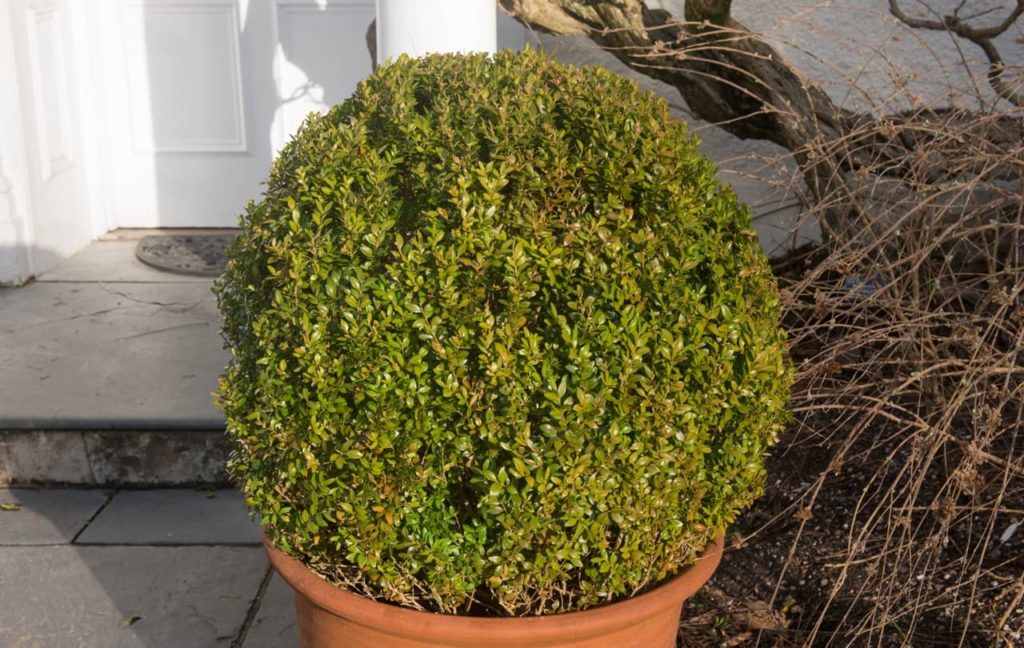Feeding And Mulching Box: Here’s How To Keep Your Buxus Plants Healthy


Elizabeth is a Permaculture Garden Designer, Sustainability Consultant and Professional Writer, working as an advocate for positive change. She graduated from the University of St. Andrews with an MA in English and Philosophy and obtained a Diploma in Applied Permaculture Design from the Permaculture Association.
Reviewed By COLIN SKELLY

Colin is a Horticulturist and Horticultural Consultant with experience in a range of practical and managerial roles across heritage, commercial and public horticulture. He holds the Royal Horticultural Society’s Master of Horticulture award and has a particular interest in horticultural ecology and naturalistic planting for habitat and climate resilience.
Contributions From BILL IRVING

Bill is the Director of Boxtrees Nursery, a specialist online retailer in Suffolk specialising in hedging and topiary plants including Buxus, Taxus, Ilex and more.

Topiary Artist based in the UK who is a member of the European Boxwood and Topiary Society and is the founder of Modern Mint. Having worked all over the UK and in New York, Darren has been featured in articles by The Guardian and has featured in Garden Masterclass videos on YouTube. He is also currently writing a book entitled ‘Modern Topiary’.
IN THIS GUIDE
BOXWOOD GUIDES
Box Blight
Feeding
Pruning
Buxus, or box as it is commonly known, is often used for topiary and hedging.
This evergreen is neat and dense year-round and looks lovely when clipped into more formal forms or when left to grow more naturally.
Unfortunately, this shrub can be prone to a number of pest and disease issues, so it is important to make sure that box is kept in good condition, as healthy plants are able to better withstand any issues that come their way.
It is therefore important to ensure that our box trees get the nutrients they need to stay healthy; feeding Buxus well can help with this.

When it comes to feeding box, here are the key things to remember:
- Box takes its nutrients from the soil in which it grows, so ensuring that the soil is healthy is the foundation of any good feeding regime.
- Mulch each spring with a thick mulch of well-rotted organic material such as homemade compost, leaf mould or well-rotted manure.
- Feed box growing in containers with a balanced, organic, liquid plant feed once a month through the summer season, avoiding excessively high nitrogen feeds.
We address each of these key factors below, with advice from our expert contributors.
| Difficulty | Easy |
| Equipment Required | Mulch (such as leaf mould or well-rotted manure), liquid plant feed, a healthy soil |
| When To Feed | Spring or after pruning |
Soil Requirements For Box Trees
Whenever we are thinking about feeding any plants, we always need to remember the fundamentals.
Everything comes back to the soil since, of course, it is through that medium that the roots of the plant can obtain the nutrients they need.
Therefore, the first step when feeding a box tree is to think about where you are growing it and whether the soil or growing medium in that location is optimal for the health of the variety you are growing.
To learn the answer to this question, you also need to understand the soil requirements for box and what it needs to remain as happy and healthy as possible.

Buxus needs soil that is moist yet free-draining or free-draining.
These shrubs cannot tolerate remaining in a waterlogged situation and this is one of the most important factors in determining where they will grow well.
Box shrubs thrive when in neutral to very mildly acidic soil, though they can be tolerant of a range of pH levels and can be grown successfully in many different soils.
“The optimum soil pH should be 6.8-7.5,” shares Darren Lerigo, a Topiary Artist from the European Boxwood and Topiary Society.
“The soil should also let the plants absorb nutrients easily and be free-draining so that the plant’s roots aren’t sitting in moist soil for too long.

“If plants are in the ground and nutrients are required, apply a balanced fertiliser in the autumn to allow take up through the roots during the winter which will give natural growth in the spring.
“Plants in pots will need regular low-level nutrients to replace those washed out due to watering: a liquid seaweed feed works well.”
Before planting box in your garden, it is important to make sure you have amended the soil with plenty of organic matter to improve drainage and soil structure.
This is especially important when the soil is a heavier one with poor drainage, but adding organic matter is always a good idea to improve the health of box plants and to make sure that they get the nutrients they need.
Providing The Right Mulch For Buxus
You should not only add plenty of organic matter to the planting area, but you should also replenish the mulch around box each spring in order to maintain soil health and keep your box growing strong, as Bill Irving from Boxtrees Nursery Ltd explains:
“You should always water during dry spells and mulch to conserve moisture and suppress weeds.”
In addition to this annual mulching, it is also a good idea to add more organic matter around your box whenever it is pruned or when work due to illness or pests has been undertaken.

Mulch adds nutrients to the soil as it breaks down that can be taken up by the roots of your plants.
It also creates something of a barrier between the lowest leaves on your box and the soil, which may help to reduce the spread of problems like blight.
Mulch also helps conserve soil moisture in dry conditions and can suppress weed growth to a degree.
There are a number of different types of mulch that you might use around Buxus, including homemade compost, leaf mould and well-rotted manure.
“For mulching Box, I use wood chip,” shares Master Horticulturist Colin Skelly.
“This breaks down to provide organic matter, conserves soil moisture and prevents the spread of fungal spores from water splash.”

All of these choices offer a good nutritional profile and slow-release fertiliser for these plants.
Keep in mind that feeding box trees too much, especially with high-nitrogen feeds, can be detrimental.
An organic approach is always best and you may not need to do any more than mulching when growing box trees in the ground.
If growth is poor, you can feed with an organic fertiliser such as blood, fish and bone in spring – however, this is often unnecessary and organic mulch will be sufficient to keep plants healthy and well-fed, provided your box is growing in reasonably healthy soil.
Feeding Box Grown In Containers
Box trees growing in containers require feeding a little more frequently and are fed differently from those growing in the ground.
Of course, as with growing box trees in the ground, the growing medium should be your first concern.
When growing Buxus in containers, a peat-free medium should be used.
Remember, like good soil for box, a good potting mix should be moist yet free-draining and should contain a reasonable proportion of organic matter, making it reasonably rich and fertile in its composition.

In addition to ensuring a good potting mix, which should be replenished regularly, box growing in containers is also best fed with a liquid plant feed every month or so during the summer.
Make sure you use a fairly gentle feed that is not too high in nitrogen.
A good quality compost tea may be ideal.
As you can see from the above, feeding box trees is a simple process that differs when growing in the ground compared with container cultivation.
It is easy to choose organic options for mulch and other feeds when growing these evergreen shrubs in your garden.
